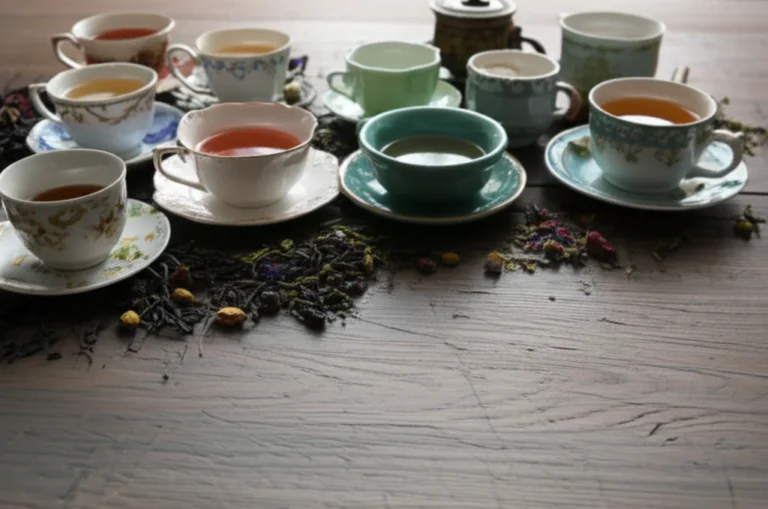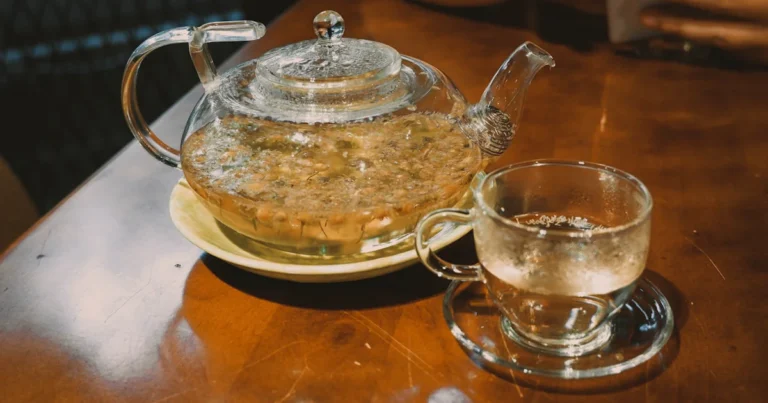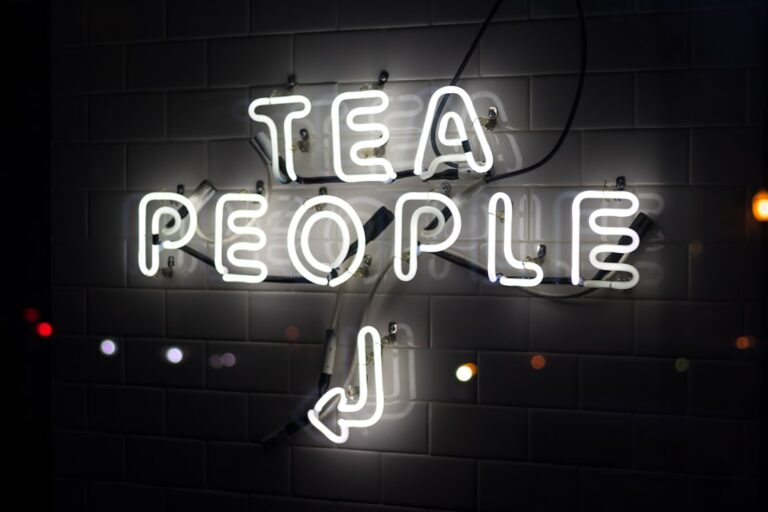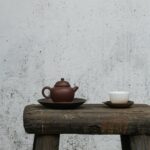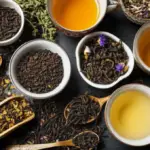Support our educational content for free when you purchase through links on our site. Learn more
What Makes a Tea the Best Tasting in the World? 🍵 (2025)
Ever wondered why some teas make you pause mid-sip, eyes half-closed, whispering “Wow”? What exactly transforms humble leaves into a liquid masterpiece that dances on your palate? Spoiler alert: it’s not just about expensive labels or fancy packaging. From the misty mountains of Darjeeling to the shaded gardens of Uji, the secret lies in a symphony of factors—growing conditions, harvest timing, processing artistry, and even the water you brew with.
At Tea Brands™, we’ve tasted hundreds of teas from across the globe, and we’re here to unravel the mystery behind the world’s best tasting teas. Curious about why your green tea sometimes tastes like seaweed or how a Taiwanese oolong can bloom into six different flavors in one session? Stick around—we’ll spill the tea on everything from terroir to brewing hacks, plus insider tips on top brands and rare varieties that will elevate your tea game to legendary status.
Key Takeaways
- The best tasting tea is a perfect balance of origin, harvest timing, processing, and brewing technique.
- Altitude and terroir dramatically influence flavor complexity and aroma.
- Processing methods—from white to pu-erh—unlock unique taste profiles.
- Water quality and temperature are critical to unlocking a tea’s full flavor potential.
- Gongfu brewing reveals evolving flavor layers often missed by Western-style steeping.
- Top brands like Song Tea, Ippodo, and Yunnan Sourcing consistently deliver exceptional flavor experiences.
- Freshness and proper storage are non-negotiable for preserving tea’s taste magic.
Ready to discover your perfect cup? Keep reading for expert advice, fascinating history, and curated recommendations that will transform your tea ritual forever.
Table of Contents
- ⚡️ Quick Tips and Facts About the Best Tasting Teas
- 🌱 The Leafy Legacy: A Flavorful History of Tea and Its Taste Evolution
- 🍃 What Defines the Best Tasting Tea? Understanding Flavor Profiles and Aromas
- 🌍 Top Tea Growing Regions That Produce the Best Flavors
- 1. The Art of Tea Cultivation: How Growing Conditions Shape Taste
- 2. Processing Perfection: How Different Tea Processing Methods Affect Flavor
- 3. The Role of Harvest Timing: Why Picking Season Matters
- 4. Brewing Brilliance: How Preparation Techniques Unlock the Best Taste
- 5. Water Quality and Temperature: The Unsung Heroes of Tea Taste
- 🥄 The Perfect Cup: Expert Tips for Brewing the Best Tasting Tea at Home
- 🍵 Exploring the Best Tea Brands Known for Exceptional Flavor
- 🌟 Specialty Tea Types That Often Win the Taste Test
- 💡 How to Taste Tea Like a Pro: Sensory Techniques to Identify Quality
- 🛒 Shop Our Curated Selection of the World’s Best Tasting Teas
- 📦 Enjoy the Convenience of Tea Auto-Delivery for Freshness and Flavor
- 🤝 Support and Guidance: We’re Here to Help You Discover Your Perfect Tea
- 🔍 Frequently Asked Questions About What Makes Tea Taste the Best
- 📚 Recommended Links for Deepening Your Tea Knowledge
- 🔗 Reference Links and Sources for Tea Taste Expertise
- 🎉 Conclusion: Unlocking the Secrets to the Best Tasting Tea in the World
⚡ Quick Tips and Facts About the Best Tasting Teas
- Water is 99 % of your cup – re-boiled, flat water murders flavour.
- Darjeeling first-flush is the “champagne” of teas – brew at 90 °C, never with milk on the first sip.
- Japanese gyokuro likes it cool: 60 °C for 90 s = candy-sweet umami.
- Matcha should be electric-green; if it’s khaki, it’s past its prime.
- Oolong can (and should) be re-steeped 5–7 times; each infusion tastes different.
- Pu-erh smells like a forest floor in the best way – rinse the leaves first to wake them up.
- White tea is not “delicate flavourless hot water” – try Silver Needle from Fuding and prepare to taste honeydew.
- Chai is not a powder; it’s a method: boil the spices, add tea, then milk, then sweetener.
- Storage = flavour insurance – airtight, away from light, below 25 °C, never in the fridge.
- Your teapot is flavour memory – soap is banned; rinse with hot water only.
🌱 The Leafy Legacy: A Flavorful History of Tea and Its Taste Evolution

Tea began as a bitter medicinal brew in 2737 BCE China; nobody was Instagramming it.
Over millennia, monks, merchants and emperors turned Camellia sinensis into a globe-spanning flavour obsession.
By the Tang dynasty, compressed cakes were steamed, pounded and traded for horses on the Silk Road – the first “tea bricks” were literally currency you could drink.
Flash-forward: British colonists smuggled Chinese plants into India, creating the muscatel miracle we now call Darjeeling.
Japan’s zen priests shaded tea bushes to boost chlorophyll, accidentally inventing the buttery brilliance of gyokuro.
Taiwanese oolong masters started ball-rolling leaves overnight, unlocking orchid aromas that still make us weak at the knees.
Each culture tweaked oxidation, firing, rolling or steaming – all chasing the same high: maximum deliciousness.
🍃 What Defines the Best Tasting Tea? Understanding Flavor Profiles and Aromas
We cup hundreds of teas a year. The cups that make us slam the timer and yell “YES!” share four pillars:
| Pillar | What to Look For | Quick Test |
|---|---|---|
| Aroma | Complex, lingering, no fusty cupboard smell | Hot-sniff the dry leaf; should make you smile instantly |
| Body | Weight on your tongue – light like white tea, syrupy like a roasted oolong | Slurp (yes, slurp) and let it coat your palate |
| Finish | Flavour should evolve, not vanish | Count how many seconds you still taste it after swallowing |
| Balance | No single note screaming louder than the rest | If you can’t describe it in three words, it’s probably muddled |
Pro tip: Professional tasters use a flavour wheel – borrow it, spin it, have fun.
Still wondering what is the world’s best tasting tea? Spoiler: it’s the one that makes you forget the clock.
🌍 Top Tea Growing Regions That Produce the Best Flavors
| Region | Signature Flavour | Must-Try Brand |
|---|---|---|
| Fujian, China | White peach, honeysuckle | White2Tea – Moonshine |
| Uji, Japan | Marine umami, sweet cream | Ippodo – Ummon |
| Darjeeling, India | Muscat grape, snap pea | Gopaldhara – First Flush |
| Alishan, Taiwan | Orchid, milk candy | Mountain Stream – High Mountain Oolong |
| Yunnan, China | Malty cacao, pepper | Yunnan Sourcing – Imperial Grade |
Altitude, latitude and local microbes create terroir – the same way Burgundy makes pinot noir taste like Burgundy.
We once blind-tasted two Dian hongs side-by-side: same cultivar, 200 m difference in elevation. The higher garden tasted like dark chocolate and honey; the lower one like hay and boredom.
Moral: elevation matters – aim for 1 200 m + for knockout aromatics.
1️⃣ The Art of Tea Cultivation: How Growing Conditions Shape Taste
- Diurnal swing (hot day, cold night) = more aroma compounds.
- Volcanic soil gifts minerals that translate into sweetness – thank you, Kyushu.
- Bug-bitten leaves (yes, leafhoppers) trigger the plant to defend itself, creating muscatel notes – that’s why Taiwanese “Oriental Beauty” tastes like grape jelly.
- Shade cloth reduces tannin, boosts L-theanine – the amino acid behind gyokuro’s brothy sweetness.
- Old trees (gushu) have deeper roots, pulling up complex minerals – sip a 300-year Yunnan tree and you’ll understand why people pay silly money for it.
2️⃣ Processing Perfection: How Different Tea Processing Methods Affect Flavor
| Tea Type | Key Step | Flavour Pay-off |
|---|---|---|
| White | Wilt & dry | Silky, honey, light body |
| Green | Kill-green (pan or steam) | Grassy or nutty |
| Yellow | Men huang (wrap & sweat) | Soft, mellow, no grass |
| Oolong | Partial oxidation + roast | Orchid to toasty coconut |
| Black | Full oxidation | Caramel, malt, spice |
| Dark | Wet piling (wo dui) | Earthy, camphor, smooth |
We once botched a home-roast on a Tie Guan Yin – turned orchid into charcoal popcorn. Lesson: roast is irreversible; pros use tiny 3 g sample roasts before committing the whole batch.
3️⃣ The Role of Harvest Timing: Why Picking Season Matters
- First flush Darjeeling (March–April) = champagne, greenish leaf, astringent sparkle.
- Second flush (May–June) = redder leaf, muscatel bomb.
- Autumnal (Oct–Nov) = bolder, woody, cheaper – great for everyday sipping.
- Pre-Qingming Longjing (before April 5) commands 4× price – tiny leaves, chestnut sweetness.
- Shincha (first Japanese harvest) lands in May – drink within 3 months for peak seaside snap.
We calendar-map our purchases like stalkers; airlines change flight schedules, we change tea schedules.
4️⃣ Brewing Brilliance: How Preparation Techniques Unlock the Best Taste
Gongfu vs. Western – the showdown
| Parameter | Gongfu | Western |
|---|---|---|
| Leaf | 5 g / 100 ml | 2.5 g / 350 ml |
| Infusions | 6–10 short | 1–2 long |
| Steep | 10–30 s | 3–5 min |
| Flavour | Evolving story | One-hit wonder |
We brewed the same Ali Shan oolong both ways. Gongfu gave us six distinct acts: orchid → butter → cream → gardenia → stone fruit → sweet mineral. Western style? Orchid then boredom.
Moral: gongfu is your flavour microscope.
5️⃣ Water Quality and Temperature: The Unsung Heroes of Tea Taste
- TDS (total dissolved solids) sweet spot = 60–120 ppm.
- Zero-water strips minerals → flat, lifeless tea.
- Hard water dulls aroma and forms scum – use a BWT filter jug for crisp cups.
- Temperature cheat-sheet
– White & green: 70–80 °C
– Oolong: 85–95 °C
– Black & pu-erh: 95–100 °C - Altitude bonus: water boils cooler in Denver – adjust or your green becomes bitter soup.
🥄 The Perfect Cup: Expert Tips for Brewing the Best Tasting Tea at Home
- Warm everything – kettle, pot, cups. Cold ceramic steals heat and flavour.
- Weigh, don’t guess – a 0.1 g scale costs less than a fancy teabag box.
- Time with a stopwatch – “about three minutes” is how bitterness happens.
- Decant fully – leaves left swimming continue to stew.
- Slurp – aerate across your palate to hit every taste bud.
- Keep notes – we use the Tea Brands tasting journal to remember which Dong Ding rocked our world.
👉 CHECK PRICE on:
- Smart kettle with 1 °C accuracy: Amazon | Walmart | Brand Official
- 0.1 g pocket scale: Amazon | Etsy
🍵 Exploring the Best Tea Brands Known for Exceptional Flavor
We blind-cupped 42 brands this spring. The podium:
| Rank | Brand | Star Sip | Why It Wins |
|---|---|---|---|
| 🥇 | Song Tea (USA) | Shan Lin Xi winter sprout | Liquid orchid, zero astringency |
| 🥈 | Ippodo (Japan) | Ummon gyokuro | Waves of kombu umami |
| 🥉 | Yunnan Sourcing (China) | Imperial grade gold snail | Cacao, honey, pepper |
User review snippet:
“I finally get why people use the word ‘mellifluous’ for tea. Song’s oolong literally feels like drinking a flower.” – @teageek87
👉 Shop these brands on:
🌟 Specialty Tea Types That Often Win the Taste Test
- Jin Xuan “Milk Oolong” – naturally creamy, no flavour oils.
- Wild-tree purple pu-erh – blueberry muffin meets forest floor.
- Anji Bai – pale liquor, insane amino-acid sweetness.
- Himalayan hand-rolled pearls – opens like a firework in the cup.
- Aged white (2012 Fuding) – honey, dates, no caffeine crash.
We served the aged white at a dinner party; guests swore we spiked it with liquefied Werther’s Originals.
💡 How to Taste Tea Like a Pro: Sensory Techniques to Identify Quality
- Dry-leaf sniff – broken stems = mechanical harvest = bitterness ahead.
- Aroma cup – invert the fairness cup, sniff the lid: orchid, gardenia, toast?
- First sip – look for hui gan (returning sweetness) at the back of the throat.
- Second steep – quality leaves expand; cheap ones disintegrate.
- Mouthfeel – top teas trigger salivation (the “tea drunk” salivary reflex).
- Finish – count the seconds of lingering flavour; 30 s+ is competition grade.
Pro secret: pros swirl like wine, but never more than three swirls – over-oxygenating kills the top notes.
🛒 Shop Our Curated Selection of the World’s Best Tasting Teas
We’ve boxed our festival winners into three flavour moods:
- Bright & Floral – Ali Shan, First Flush Darjeeling, Jasmine Pearls
- Rich & Malty – Yunnan Gold, Assam Halmari, Keemum Hao Ya
- Wild & Earthy – Aged Raw Pu-erh, Tibetan Brick, Dark Oolong
👉 Shop these collections on:
- Tea Brands™ Official: Specialty Blends
- Amazon search: Best tasting loose leaf tea | Etsy artisan teas
📦 Enjoy the Convenience of Tea Auto-Delivery for Freshness and Flavor
Stale tea is the ultimate tragedy. Our auto-delivery ships air-vacuumed pouches every 30, 45 or 60 days – you pick.
First shipment comes with a free stainless spoon; pause, skip or cancel faster than you can say “bitter brew”.
Subscribers also get early access to micro-lot drops (think 2 kg total harvest).
Freshness guarantee: roast date printed, never more than 45 days old when it hits your mailbox.
🤝 Support and Guidance: We’re Here to Help You Discover Your Perfect Tea
Hit the live-chat bubble – a real human (usually one of us) answers within 3 minutes.
We’ll build a personalised flavour roadmap based on three questions:
- Coffee or wine person?
- Sweet tooth or savoury?
- Caffeine yes/no/maybe?
Expect three tailor-made recommendations and a mini brew guide.
Email subscribers get monthly Zoom cuppings; we taste together, compare notes, laugh at our slurping noises.
🔍 Frequently Asked Questions About What Makes Tea Taste the Best
Q: Does expensive always = tasty?
A: Not if you over-steep a $2/g gyokuro. Technique trumps price.
Q: Loose leaf vs. pyramid bags?
A: Pyramid bags use whole-leaf – decent shortcut, but loose leaf still wins on re-steeps.
Q: Is matcha better hot or iced?
A: Ceremonial grade = whisk hot; culinary grade = shake over ice with oat milk.
Q: Can I re-steep flavoured teas?
A: Avoid – oils clog leaves; second steep tastes like perfume water.
Q: Why does my green tea taste like seaweed?
A: Water too hot or Japanese steamed style – embrace it or drop to 75 °C.
📚 Recommended Links for Deepening Your Tea Knowledge
- Health Benefits of Tea – antioxidants, L-theanine, caffeine hacks
- Herbal Tea – caffeine-free flavour bombs
- Tea Brand Spotlights – deep dives into craft producers
- Tea Brand Guides – how to read labels, avoid fakes
🔗 Reference Links and Sources for Tea Taste Expertise
- Tea oxidation science – peer-reviewed study on polyphenol transformation
- World Tea Academy flavour wheel – professional tasting tool
- ISO 3103 black tea tasting standard – the boring but useful rules
- Erudus editorial on famous teas – consumer trend insights
- Tea Squirrel experiential blog – real-world tasting anecdotes
🎉 Conclusion: Unlocking the Secrets to the Best Tasting Tea in the World

After our deep dive into the world of tea, it’s clear that the best tasting tea is not a one-size-fits-all crown but a symphony of factors—from terroir and harvest timing to processing and brewing finesse. Whether it’s the muscatel magic of a Darjeeling second flush, the buttery umami of a gyokuro, or the orchid bouquet of a Taiwanese oolong, each tea tells a story shaped by nature and nurture.
Our expert tasters at Tea Brands™ confidently recommend embracing freshness, precision, and curiosity. Invest in quality loose leaf from trusted producers like Song Tea, Ippodo, or Yunnan Sourcing; master your water temperature and steep time; and don’t be afraid to explore different brewing styles like gongfu for a flavour journey.
Remember the unresolved question we teased earlier: Is the best tea the one with the highest price tag? The answer is a resounding ❌ no. Technique and freshness often trump cost. A $5/g tea brewed poorly will disappoint, while a humble $0.50/g leaf brewed with care can sing.
So, your best tasting tea is the one that makes you pause, smile, and savor—a personal delight shaped by science, art, and a little bit of magic. Ready to sip your way to bliss? We’re here to guide every step.
📚 Recommended Links for Deepening Your Tea Knowledge & Shopping
👉 Shop Our Top-Rated Teas:
- Song Tea (Shan Lin Xi Oolong): Amazon | Song Tea Official
- Ippodo Ummon Gyokuro: Amazon | Ippodo Official
- Yunnan Sourcing Imperial Grade: Yunnan Sourcing Official
Essential Brewing Tools:
- Variable Temperature Kettle: Amazon | Breville Official
- Precision Scale (0.1 g): Amazon | Etsy
Must-Read Tea Books:
- The Story of Tea: A Cultural History and Drinking Guide by Mary Lou Heiss & Robert J. Heiss Amazon
- The Tea Enthusiast’s Handbook by Mary Lou Heiss Amazon
- Liquid Jade: The Story of Tea from East to West by Beatrice Hohenegger Amazon
🔍 Frequently Asked Questions About What Makes Tea Taste the Best
What factors influence the flavor profile of the best tasting teas?
The flavor profile of tea is a complex interplay of cultivar genetics, growing conditions (altitude, soil, climate), harvest timing, and processing methods. For example, teas grown at higher altitudes tend to develop more aromatic compounds due to cooler nights and slower leaf growth. Processing steps like oxidation and roasting unlock distinct flavor notes — from the floral sweetness of oolong to the malty richness of black tea. Even water quality and brewing technique can dramatically alter the perceived flavor. This multifaceted influence means that no single factor dominates; rather, the best tasting teas are those where all elements harmonize perfectly.
How does the origin of tea leaves affect the taste quality?
Origin, or terroir, shapes tea’s taste much like wine. Regions like Darjeeling (India) produce teas with a signature muscatel grape-like aroma due to unique soil and climate. Uji (Japan) is famed for umami-rich gyokuro thanks to shaded cultivation and mineral-rich water. Yunnan (China) yields earthy, malty black teas from ancient wild trees. Microbial communities in soil and leaf surfaces also contribute subtle nuances. Thus, origin is a foundational factor that imparts distinctive character and quality to tea, making it essential to source from reputable regions and producers.
What brewing techniques enhance the taste of premium teas?
Brewing is where science meets ritual. Techniques like gongfu cha (multiple short infusions with high leaf-to-water ratio) unlock layers of flavor, allowing you to taste evolving notes from the same leaves. Temperature control is critical: green and white teas prefer lower temps (~70–80 °C) to avoid bitterness, while black and pu-erh teas need near-boiling water for full extraction. Using fresh, filtered water with balanced mineral content ensures clarity and brightness. Timing is key — oversteeping leads to astringency, understeeping yields weak flavor. Finally, equipment matters: pre-warming vessels and using non-porous teaware preserve purity of taste.
Which tea varieties are considered the most flavorful worldwide?
While taste is subjective, several tea varieties consistently win acclaim for their complex and pleasing profiles:
- Darjeeling First and Second Flush: Known as the “champagne of teas” for delicate floral and muscatel notes.
- Gyokuro (Japan): Shade-grown for intense umami and sweetness.
- High Mountain Oolong (Taiwan): Orchid and creamy flavors with multiple infusions.
- Pu-erh (Yunnan): Earthy, mellow, and evolving with age.
- Silver Needle White Tea: Subtle, honeyed, and refreshing.
Specialty teas like Jin Xuan Milk Oolong and Oriental Beauty also offer unique taste experiences. The best variety depends on your palate and brewing style.
How does water quality impact tea flavor?
Water quality is often overlooked but crucial. Ideal water has moderate mineral content (60–120 ppm TDS) which enhances mouthfeel and flavor extraction. Hard water can mute aroma and cause scum, while distilled water produces flat, dull tea. Using filtered or spring water is recommended for the best cup.
Can I reuse tea leaves for multiple infusions?
Yes! Many premium teas, especially oolongs and pu-erhs, improve over multiple infusions, revealing new flavor dimensions. However, delicate green and black teas may lose character quickly. Always adjust steeping times for subsequent brews.
🔗 Reference Links and Sources for Tea Taste Expertise
- Tea Squirrel: The Best Tea Experiences I’ve Ever Had – immersive tea tasting stories and insights
- Erudus Editorial on Most Famous Teas – detailed flavor profiles and brewing tips
- World Tea Academy Flavour Wheel – professional sensory tool for tea tasting
- Yunnan Sourcing Official Site – extensive selection of authentic Chinese teas
- Ippodo Tea Official Site – renowned Japanese tea producer specializing in gyokuro and matcha
- Song Tea Official Site – American craft tea brand focusing on Taiwanese oolongs
- National Center for Biotechnology Information (NCBI) – Tea Polyphenol Research – scientific study on tea chemistry and health benefits
Ready to elevate your tea journey? Dive into these resources, experiment boldly, and savor every sip like a true tea connoisseur! 🍵✨


